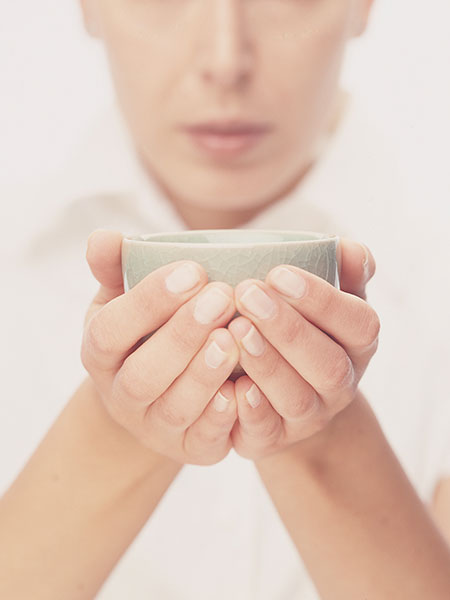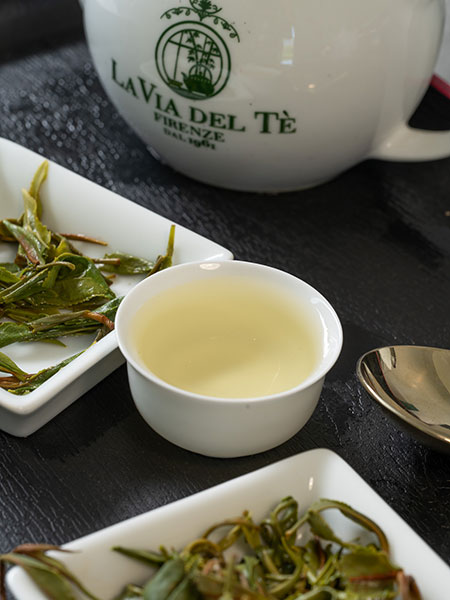
Tea & health
It’s said that it was the Chinese Emperor Shen Nong (2737 BC) who discovered the beneficial properties of tea leaves set in infusion and who consequently fostered the cultivation of Camellia Sinensis. From 200 BC tea was included in the traditional herbals as a plant useful for the treatment of fatigue and digestive disorders.There is no doubt that its salubrious properties combined with the pleasant flavour of the drink have contributed to its popularity all over the world. Ongoing research in the medical sphere has meant that in recent decades it has been possible to identify the main chemical constituents contained in tea leaves, thus underscoring the traditionally known properties and also discovering new ones.
The data in the literature, combined with in vitro and in vivo experiments appear to attribute properties beneficial to human well-being to specific substances contained in tea.
We can say that green, white and semi-oxidized or oolong teas, and Pu-Erh because of their special processing, are the richest beneficial substances for humans.
To reap the full benefit of the health-giving properties of tea, a consumption of 3 cups a day is normally recommended.
But the only tea that allows us to take in 100% of the substances contained in it, is the Japanese green Matcha, which has been used for centuries in Japan in the tea ceremony.
Unlike all the other types of tea, Matcha is drunk in the form of powdered tea leaves mixed with water, and not as an infusion: this means that we benefit fully from all the substances that green tea is rich in.
Vitamins
Among the tea benefits, vitamins are naturally found in tea: the water-soluble vitamins not destroyed by heat present in tea are B1, B2 and B6.
Green tea especially is rich in vitamin C, which strengthens the immune system against the attack of free radicals: this substance is water-soluble but is also affected by heat so unfortunately in the very hot water part of it is destroyed.

Among the benefits of tea, there is its mineral content (4-5% of the dry weight of the fresh leaves). Potassium is present in high concentrations, followed by Calcium, Magnesium, Zinc, Manganese and Fluoride.
Amino Acids
Among the benefits of tea as a wellness ally is its supply of amino acids. Among the amino acids, the essential constituents of proteins, that of greatest interest is L- Theanine (gamma-glutamyl-ethyl-amide), only found in tea, thought to be higher in green and white tea. Theanine enhances the release of some ''calming'', and ''relaxing'' neurotransmitters in the brain such as serotonin and dopamine, thus balancing the stimulating effects of caffeine on the central nervous system. It also appears to prevent ischaemic neuronal damage and contributes to the delicious 'umami' (savoury) taste.

Tea benefits for our well-being include a class of substances known as In phenolic compounds.
In green tea, over 80% of phenols are represented by flavonols (catechins).
In black teas the processing modifies the qualitative and quantitative composition of the phenols, oxidising them enzymatically into theaflavin and thearubigin, which give the beverage its characteristic aroma and amber colour and according to modern research, can help protect against heart attacks.
The teas with the highest phenol content are green, white and semi-oxidized, or Oolong.
The most important of the catechins of tea is EGCG, epigallocatechin gallate.
In addition to giving the tea infusion its typical astringent flavour, the catechins also have the following properties:
Caffeine & Co.
The content of methylxanthines (caffeine, theobromine and theophylline) varies depending on the type of tea, the botanical variety, the temperature of the water used for the infusion and the duration of the infusion itself.
On average, black tea contains mainly caffeine, while the other two xanthines are contained in greater quantities in green teas etc.
As compared with coffee, tea contains less caffeine: a cup of around 150 ml of strong black tea contains 40 mg of caffeine and a cup of green tea contains 20 mg, as against the 100-125 mg of a 40 cc cup of coffee.
The principal effect attributed to caffeine is its action as a stimulant to human mental faculties, while it also reduces the impression of fatigue. In addition, it increases renal circulation and the number of glomeruli, thus stimulating diuresis.
Normally an adult can consume up to 400 mg of caffeine a day without any adverse effects such as general toxicity, cardiovascular effects and mood swings.
All the data provided here have been taken from a study carried out by the Department of Pharmacy of the University of Florence in collaboration with the company Snak Srl - La Via del Tè.
(An estimation of the assumed amount of catechins, xanthines and theanine of several commercial representative types of tea, Department of Pharmaceutical Science, University of Florence, 2005).













